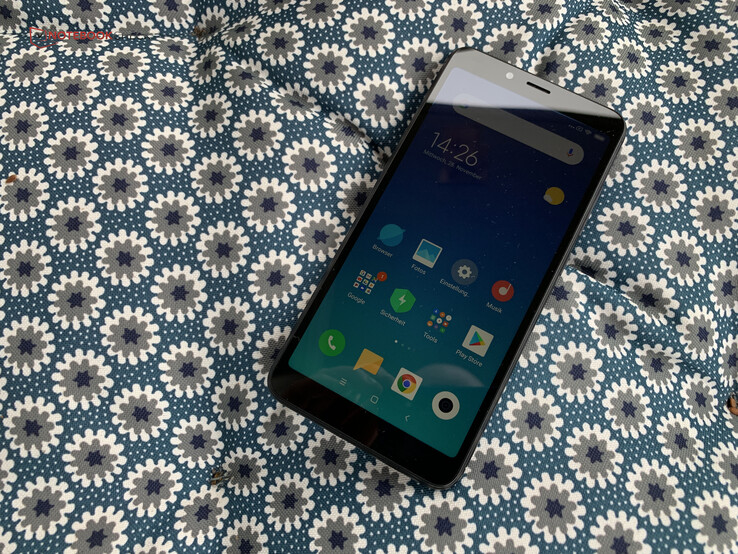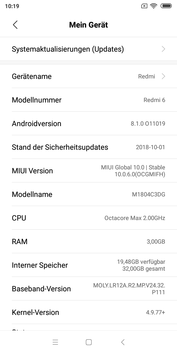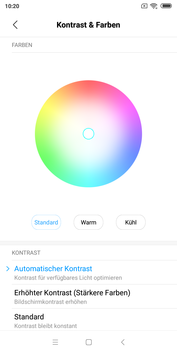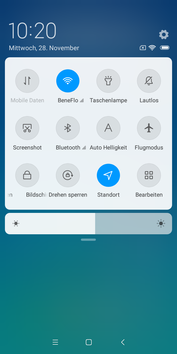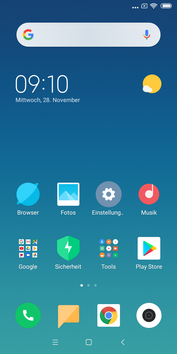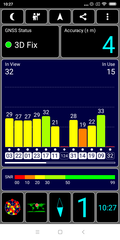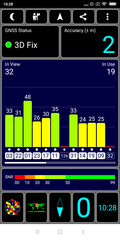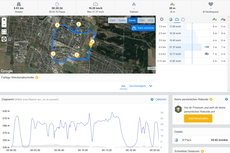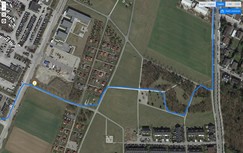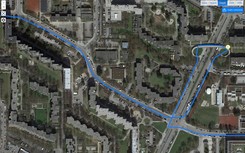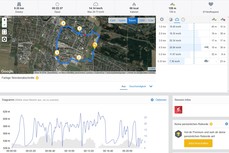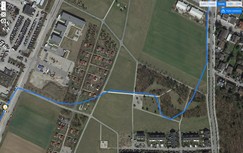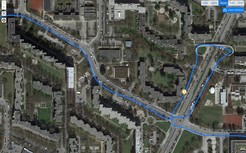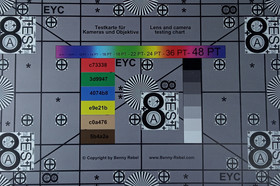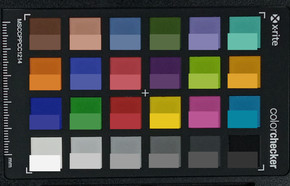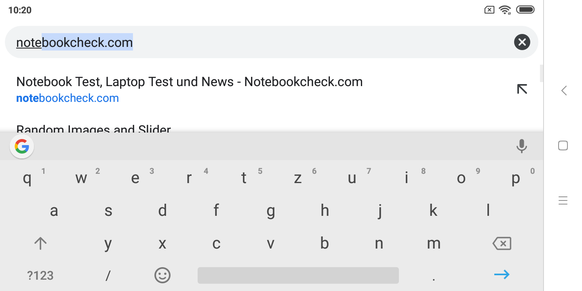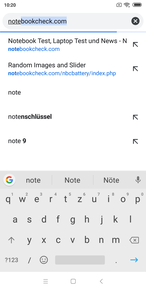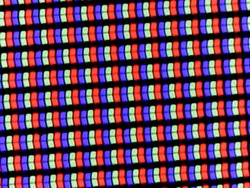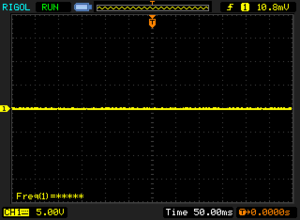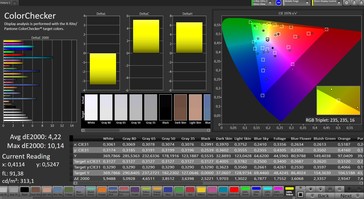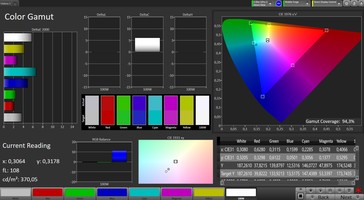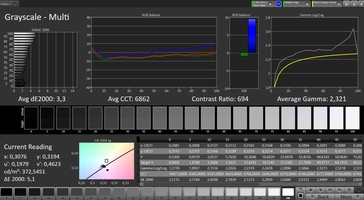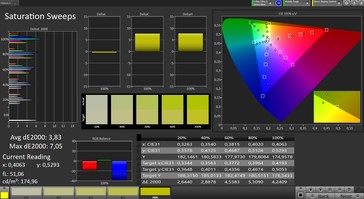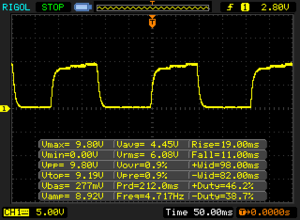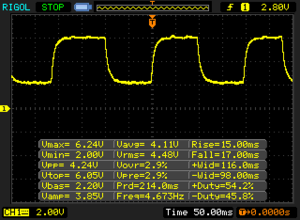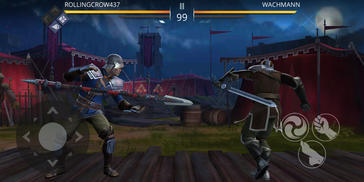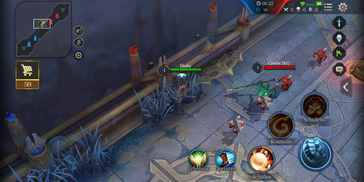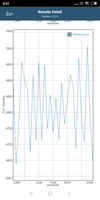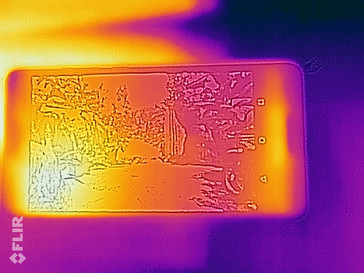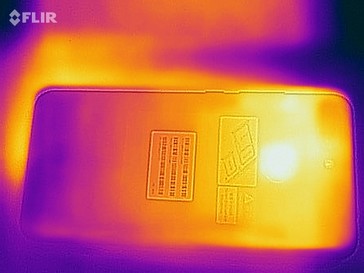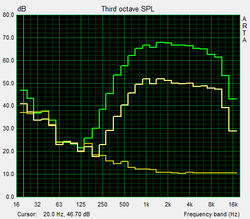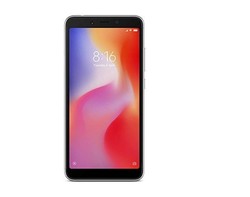Xiaomi Redmi 6 Smartphone Review
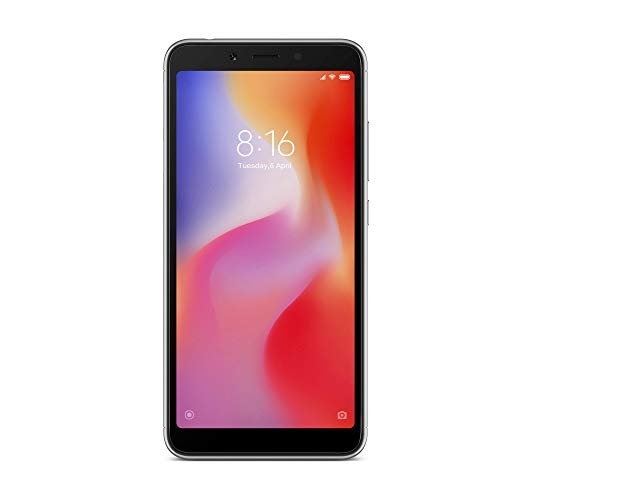
Xiaomi Redmi – When those who like a good deal hear this name, their eyes grow large: For several years, this series has offered great, affordable smartphones that went beyond what we were used from budget smartphones in terms of their equipment. However, for a long time you also had to live with having to import the smartphones from China without them being adjusted well to the western market. But those times are over, and you can now also get Xiaomi phones in local online shops. At the same time, many other manufacturers have followed suit and also introduced smartphone models that are able to stand up quite well against the Xiaomi Redmi 6.
These include, for example the Gigaset GS100, the Wiko View Lite, and the Honor 7S. We have already tested some other variants of the Redmi 6, such as the Xiaomi Redmi 6 Pro and the Redmi 6A. We also want to find out in this test what the differences to the Redmi 6 are.
Compared to the predecessor, the Xiaomi Redmi 5, you can optionally get more storage and a second camera lens on the back, but there is also a weaker battery and the new model lacks the infrared sensor.
Case – Good plastic
In a smartphone below 150 Euros (~$171), you cannot expect more than plastic as the case material, even from Xiaomi. But at least the Redmi 6 tries hard to look like metal and is nice to look at with its restrained design. With its rounded edges, the phone also feels good to hold in the hand.
According to Xiaomi, 80.5% of the front consists of the screen. There are small bezels on the sides, and the bezels are a bit larger on top and bottom to give space to the front camera and earpiece. With this, the design is at the same level as that of other budget phones. Anyone who wants more screen and does not mind a notch has to look for a slightly more expensive device such as the Redmi 6 Pro.
The Xiaomi Redmi 6 does not offer much resistance to pressure on the front and can be twisted, responding with some slight creaking. However, considering the price, the stability is decent.
Equipment – Ample optional storage
The Xiaomi Redmi 6 is available with either 32 or 64 GB of storage. The built-in amount of working memory also differs between both models: while the more affordable Redmi 6 brings 3 GB of RAM, the 64-GB model is equipped with 4 GB of RAM. Currently the price difference is barely 10 Euros (~$11) on the internet, so it definitely makes sense to get the slightly more expensive model. However, our test unit is the more affordable 32-GB model.
The Redmi phone is equipped with the classic 3.5-mm audio port, as well as a micro-USB port on the bottom that supports USB OTG. The microSD card reader is able to handle cards of up to 256 GB. It is very nice that it has its separate slot and you can therefore use two SIM cards and a microSD card at the same time. It is also interesting that both SIM slots are able to use LTE simultaneously if you desire this.
Software – Xiaomi phone with MIUI
On our test unit, MIUI 10 is preinstalled. Xiaomi's user interface is based on Android 8.1, but brings some changes in the user navigation and menu structure. At the time of our testing, the security patches are from Oct 1, 2018, so they are fairly current. There is still supposed to be an update to Android 9, but this will not be before the middle of next year, when the next Android version should already be on the market.
Many tools offering better management of the smartphone are preinstalled, such as a file manager or a cleaner app. There are hardly any ads, but only Facebook and several Microsoft apps.
Communication and GPS – Redmi 6 without 5-GHz access
The Redmi 6 enables LTE speeds up to 300 Mb/s with ten LTE frequencies being supported. All the important frequencies for the European market are included, and Band 4 which is important for the US and Canada is also supported. However, if you plan on some travel across continents, you should still check whether the Redmi 6 can access the LTE net in your host country. The reception is decent, and most of the time we had at least half the LTE reception strength indoors in the well-established German D2 net.
In terms of WLAN, unfortunately the Redmi 6 only supports the 802.11 b/g/n standards. The WLAN speed while sending is good in comparison with its price class, but while receiving it is only enough for last place, with the distance to the Honor 7S being small though. Those who want much faster transfer rates should look for the Gigaset GS100 or the Redmi 6 Pro, the latter of which even offers access to the less occupied and therefore often faster 5-GHz net, which remains inaccessible to the basic Redmi 6.
There are some significant wait times during page rendering near the router, but the full signal strength is available. At a distance of 10 meters (~33 ft) and through three walls, three quarters of the reception are still available and pages are rendered at a similar speed.
| Networking | |
| iperf3 transmit AX12 | |
| Xiaomi Redmi 6 Pro | |
| Gigaset GS100 | |
| Honor 7S | |
| Xiaomi Redmi 6A | |
| Xiaomi Redmi 6 | |
| Wiko View Lite | |
| iperf3 receive AX12 | |
| Xiaomi Redmi 6 Pro | |
| Gigaset GS100 | |
| Xiaomi Redmi 6 | |
| Xiaomi Redmi 6A | |
| Honor 7S | |
| Wiko View Lite | |
The GPS module in the Redmi 6, which also supports A-GPS, GLONASS and BeiDou, surprises us: First, it is able to locate us on the top floor of a brick building without any problems, and outdoors the location can even be determined with an accuracy of up to 2 meters (~6.6 ft).
Second, it does a very good job in our practice navigation test where we go on a bike tour with our test unit, also taking the Garmin Edge 520 professional navigation device. While the Redmi 6 likes to record some short cuts and its recordings do not exactly match our riding route, it is still able to place us on the right side of the street we rode, and is also able to master our bridge crossing quite well. Our path at the following junction area is also recorded well, so overall you can rely on the Redmi 6 for navigation on the road.
Telephone Functions and Voice Quality – VoLTE is supported
Xiaomi has adjusted the Telephone app, betting on the keypad being used more, while Google's standard app emphasizes the favorites and call lists. But in the end, both apps offer similar functions. VoLTE is supported, as long as the provider offers it.
During voice calls, the Redmi 6 strikes a fairly good figure. Our conversation partner sounds clear in the earpiece and there are hardly any noises. Our own voice is also transferred fairly clearly. During hands-free operation, our conversation partner could have been slightly louder, but our own voice is again transferred well, no matter whether we talk with a loud or low voice.
Cameras – The Redmi 6 with a decent dual camera system
In terms of the cameras, little has changed compared to the Xiaomi Redmi 5, and there is still a 12-Megapixel lens on the back. But there is one essential difference, since the main camera is now supported by a second camera lens with 5 Megapixels that handles the calculation of the depth sharpness in portrait mode. So this is the most affordable variant of a dual camera system that unfortunately also brings the least benefits. In higher-quality smartphones you can use an optical zoom, take wide-angle or telephoto pictures, or increase the image quality at night via the dual-camera system. While all that is not available in the Xiaomi Redmi 6, at least the main camera takes fairly acceptable pictures with many details and decent colors in normal light conditions. But of course the camera remains within the limits of its price-class, and higher-quality lenses capture considerably more detail and are also significantly more light-sensitive. However, considering its affordable price, the Redmi 6 takes decent pictures. In weak light, the brightness is only mediocre, but the image sharpness is also suitable here.
Videos can be recorded at a maximum of 1080p and 30 FPS. The exposure reacts smoothly and correctly to changing light conditions, but we noticed very strong graininess in weak light.
As in its predecessor, the front camera has a resolution of 5 Megapixels. Selfies are fairly acceptable, but easily become muddy in the detail. The edges of objects also look fuzzy.
The main camera also must prove itself under controlled light conditions in our test lab. The color reproduction is slightly too dark here, and the contrast could have been higher. The image sharpness is okay, but not outstanding.
Accessories and Warranty – The smartphone has no warranty for now
The insides of the box look quite spartan, which is not unusual for an affordable smartphone. There are a quick charger, a USB cable, and a SIM tool to open the tray, and that is it. Xiaomi's website does not offer any particular accessories for the smartphone either.
The warranty is still a big question mark for Xiaomi devices, but those who purchase from EU vendors have the right to a two-year warranty from the vendor. Please see our Guarantees, Return policies and Warranties FAQ for country-specific information.
Input Devices and Operation – Redmi phone with a good touchscreen
The touchscreen has a good, sliding-friendly surface and responds very fast, even at the edges of the screen.
The menu navigation of the operating system happens via symbols on the touchscreen, there are no dedicated keys or touch areas on the device. The only hardware buttons are on the right side of the smartphone, allowing you to wake up the device from standby or turn it off, or adjust the volume. The buttons can be found easily by touch and offer a very clear pressure point.
On the back of the Xiaomi Redmi 6 is a fingerprint sensor that can also be found easily by touch, responding very quickly and precisely. You can store several fingerprints, so that you can also use your other hand or offer access to other people.
Display – Fairly dark display in the Xiaomi Redmi 6
In terms of its dimensions and resolution, the display corresponds to that of the Xiaomi Redmi 6A, but the brightness distribution is slightly better in the Redmi 6. On the other hand, the Redmi 6 barely produces an average brightness of 361.4 cd/m², and its sibling models as well as the other comparison devices are significantly brighter. The resolution of the Redmi 6 is at the level of its price-class.
| |||||||||||||||||||||||||
Brightness Distribution: 94 %
Center on Battery: 373 cd/m²
Contrast: 704:1 (Black: 0.53 cd/m²)
ΔE ColorChecker Calman: 4.22 | ∀{0.5-29.43 Ø4.77}
ΔE Greyscale Calman: 3.3 | ∀{0.09-98 Ø5}
94.3% sRGB (Calman 2D)
Gamma: 2.321
CCT: 6862 K
| Xiaomi Redmi 6 IPS, 1440x720, 5.5" | Xiaomi Redmi 6A IPS, 1440x720, 5.5" | Xiaomi Redmi 6 Pro LCD IPS, 2280x1080, 5.8" | Honor 7S IPS, 1440x720, 5.5" | Gigaset GS100 IPS, 1440x720, 5.5" | Wiko View Lite IPS, 1440x720, 5.5" | |
|---|---|---|---|---|---|---|
| Screen | 22% | 6% | 11% | -27% | 7% | |
| Brightness middle (cd/m²) | 373 | 404 8% | 554 49% | 422 13% | 442 18% | 524 40% |
| Brightness (cd/m²) | 361 | 400 11% | 538 49% | 417 16% | 446 24% | 499 38% |
| Brightness Distribution (%) | 94 | 82 -13% | 91 -3% | 96 2% | 86 -9% | 89 -5% |
| Black Level * (cd/m²) | 0.53 | 0.26 51% | 0.61 -15% | 0.58 -9% | 0.35 34% | 0.6 -13% |
| Contrast (:1) | 704 | 1554 121% | 908 29% | 728 3% | 1263 79% | 873 24% |
| Colorchecker dE 2000 * | 4.22 | 4.28 -1% | 4.86 -15% | 3.29 22% | 8.03 -90% | 4.75 -13% |
| Colorchecker dE 2000 max. * | 10.14 | 9.97 2% | 8.46 17% | 6.91 32% | 15.81 -56% | 8.45 17% |
| Greyscale dE 2000 * | 3.3 | 3.5 -6% | 5.3 -61% | 3.1 6% | 10.4 -215% | 4.3 -30% |
| Gamma | 2.321 95% | 2.213 99% | 2.281 96% | 2.219 99% | 2.02 109% | 2.248 98% |
| CCT | 6862 95% | 6899 94% | 7770 84% | 6873 95% | 10070 65% | 7261 90% |
* ... smaller is better
Screen Flickering / PWM (Pulse-Width Modulation)
| Screen flickering / PWM not detected | |||
In comparison: 53 % of all tested devices do not use PWM to dim the display. If PWM was detected, an average of 8084 (minimum: 5 - maximum: 343500) Hz was measured. | |||
We did not notice any PWM flickering in the Redmi 6. At 0.53 cd/m², the black value is barely at the class level, but since the brightness is also less than that of the other devices, the contrast ratio is rather mediocre at only 704:1. Colors look slightly pale, but the Redmi 6 also offers several color profiles and an option to manually adjust the white balance.
In our tests with the CalMAN software and the spectral photometer, we evaluate the default color settings. The Redmi 6 fares fairly well for its price-class, and only the green and blue tones deviate too much from the reference color space. There is no blue tint, which is also positive.
Display Response Times
| ↔ Response Time Black to White | ||
|---|---|---|
| 30 ms ... rise ↗ and fall ↘ combined | ↗ 19 ms rise | |
| ↘ 11 ms fall | ||
| The screen shows slow response rates in our tests and will be unsatisfactory for gamers. In comparison, all tested devices range from 0.1 (minimum) to 240 (maximum) ms. » 79 % of all devices are better. This means that the measured response time is worse than the average of all tested devices (20.2 ms). | ||
| ↔ Response Time 50% Grey to 80% Grey | ||
| 32 ms ... rise ↗ and fall ↘ combined | ↗ 15 ms rise | |
| ↘ 17 ms fall | ||
| The screen shows slow response rates in our tests and will be unsatisfactory for gamers. In comparison, all tested devices range from 0.165 (minimum) to 636 (maximum) ms. » 42 % of all devices are better. This means that the measured response time is similar to the average of all tested devices (31.6 ms). | ||
There are significant brightness shifts in the viewing angles when looking at the display from the side, but the contents still remain recognizable.
Outdoors, the Xiaomi Redmi 6 has a hard time due to the low brightness, so you should only use it in the shade on bright days. The brightness sensor reacts well and fairly quickly to changing light conditions.
Performance – Decent amount of power for a budget phone
The Mediatek Helio P22 MT6762 is really a mid-range SoC and quite an advertisement for such an affordable smartphone. In fact, the Xiaomi Redmi 6 again is much faster than all the comparison devices, if you exclude the more expensive Redmi 6 Pro. The same also goes for the PowerVR GE8320 graphics solution, which does its work quickly.
| PCMark for Android | |
| Work performance score (sort by value) | |
| Xiaomi Redmi 6 | |
| Xiaomi Redmi 6A | |
| Xiaomi Redmi 6 Pro | |
| Honor 7S | |
| Wiko View Lite | |
| Average Mediatek Helio P22 MT6762 (4404 - 7465, n=18) | |
| Work 2.0 performance score (sort by value) | |
| Xiaomi Redmi 6 | |
| Xiaomi Redmi 6A | |
| Xiaomi Redmi 6 Pro | |
| Honor 7S | |
| Gigaset GS100 | |
| Wiko View Lite | |
| Average Mediatek Helio P22 MT6762 (3805 - 5380, n=21) | |
| AnTuTu v7 - Total Score (sort by value) | |
| Xiaomi Redmi 6 | |
| Xiaomi Redmi 6A | |
| Xiaomi Redmi 6 Pro | |
| Honor 7S | |
| Wiko View Lite | |
| Average Mediatek Helio P22 MT6762 (71347 - 88242, n=9) | |
| AnTuTu v6 - Total Score (sort by value) | |
| Xiaomi Redmi 6 | |
| Xiaomi Redmi 6A | |
| Xiaomi Redmi 6 Pro | |
| Gigaset GS100 | |
| Wiko View Lite | |
| Average Mediatek Helio P22 MT6762 (52433 - 57309, n=7) | |
The browser performance is also quite fast in the Redmi 6 if you consider similar-priced devices, but the Redmi 6A performs at a fairly similar level.
More demanding HTML-5 pages such as Google's Interland run quite smoothly and only stutter occasionally.
| JetStream 1.1 - Total Score | |
| Xiaomi Redmi 6 Pro (Chrome 68) | |
| Xiaomi Redmi 6A (Chrome 70) | |
| Average Mediatek Helio P22 MT6762 (22.7 - 24.6, n=5) | |
| Xiaomi Redmi 6 (Chrome 70) | |
| Wiko View Lite (Chrome 67) | |
| Honor 7S (Chrome 67) | |
| Gigaset GS100 (Chrome 68) | |
| Octane V2 - Total Score | |
| Average of class Smartphone (2228 - 126661, n=194, last 2 years) | |
| Xiaomi Redmi 6 Pro (Chrome 68) | |
| Xiaomi Redmi 6A (Chrome 70) | |
| Xiaomi Redmi 6 (Chrome 70) | |
| Average Mediatek Helio P22 MT6762 (3312 - 4508, n=9) | |
| Wiko View Lite (Chrome 67) | |
| Honor 7S (Chrome 67) | |
| Gigaset GS100 (Chrome 68) | |
| Mozilla Kraken 1.1 - Total | |
| Honor 7S (Chrome 67) | |
| Gigaset GS100 (Chrome 68) | |
| Wiko View Lite (Chrome 67) | |
| Average Mediatek Helio P22 MT6762 (10846 - 12799, n=9) | |
| Xiaomi Redmi 6 (Chrome 70) | |
| Xiaomi Redmi 6A (Chrome 70) | |
| Xiaomi Redmi 6 Pro (Chrome 68) | |
| Average of class Smartphone (257 - 28190, n=154, last 2 years) | |
| WebXPRT 2015 - Overall | |
| Xiaomi Redmi 6 Pro (Chrome 68) | |
| Xiaomi Redmi 6 (Chrome 70) | |
| Average Mediatek Helio P22 MT6762 (n=1) | |
| Xiaomi Redmi 6A (Chrome 70) | |
| Gigaset GS100 (Chrome 68) | |
| WebXPRT 3 - Overall | |
| Average of class Smartphone (38 - 380, n=30, last 2 years) | |
| Xiaomi Redmi 6 Pro (Chrome 68) | |
| Xiaomi Redmi 6A (Chrome 70) | |
| Xiaomi Redmi 6 (Chrome 70) | |
| Average Mediatek Helio P22 MT6762 (26 - 30, n=7) | |
* ... smaller is better
Our Toshiba Exceria Pro M501 reference microSD card achieves quite fast transfer rates in the Xiaomi Redmi 6. The system also operates fast when accessing internal storage. Particularly compared to the Gigaset GS100 which is very slow in this regard, we can see significant differences in the access speeds.
| Xiaomi Redmi 6 | Xiaomi Redmi 6A | Xiaomi Redmi 6 Pro | Honor 7S | Gigaset GS100 | Wiko View Lite | Average 32 GB eMMC Flash | Average of class Smartphone | |
|---|---|---|---|---|---|---|---|---|
| AndroBench 3-5 | 3% | 34% | -26% | -51% | -33% | -20% | 868% | |
| Sequential Read 256KB (MB/s) | 287 | 277.5 -3% | 278.7 -3% | 237.6 -17% | 97.2 -66% | 253.2 -12% | 242 ? -16% | 2235 ? 679% |
| Sequential Write 256KB (MB/s) | 118.4 | 131.7 11% | 212.9 80% | 67.1 -43% | 24 -80% | 44.45 -62% | 100.5 ? -15% | 1871 ? 1480% |
| Random Read 4KB (MB/s) | 52.5 | 33.94 -35% | 66.9 27% | 39.69 -24% | 17.6 -66% | 27.35 -48% | 43.1 ? -18% | 297 ? 466% |
| Random Write 4KB (MB/s) | 36.3 | 52.2 44% | 72.6 100% | 13.24 -64% | 6.2 -83% | 11.05 -70% | 22.3 ? -39% | 343 ? 845% |
| Sequential Read 256KB SDCard (MB/s) | 82.9 ? | 82.8 ? 0% | 83.5 ? 1% | 80.1 ? -3% | 79.5 ? -4% | 80.9 ? -2% | 71.8 ? -13% | |
| Sequential Write 256KB SDCard (MB/s) | 64.4 ? | 65.7 ? 2% | 62.2 ? -3% | 61.9 ? -4% | 61 ? -5% | 61.9 ? -4% | 52.9 ? -18% |
Games – Smartphone for non-demanding gamers
The Xiaomi Redmi 6 is basically suited for gaming if you are content with 30 FPS and do not run any other demanding tasks in the background. In "Arena of Valor," we achieved a fairly constant 30 FPS regardless of the selected quality level. In "Shadow Fight 3," the frame rate can even rise above 50 FPS, but we cannot achieve a constant 60 FPS. There are also some noticeable stutters in the menus.
With the help of "Temple Run 2," we can evaluate the quality of the position sensor and touchscreen for controlling games. Both respond to inputs with only minimal delays.
Emissions – Little warming, no throttling
Temperature
At no time do the surface temperatures of the Xiaomi Redmi 6 rise to a critical range. At a maximum of 33.8 °C (~93 °F), you hardly notice the warming even after prolonged loads.
Thus, it is not surprising that the performance can be maintained under longer loads without any problems, and you do not need to be concerned about any throttling in the Xiaomi Redmi 6.
(+) The maximum temperature on the upper side is 32.9 °C / 91 F, compared to the average of 35.2 °C / 95 F, ranging from 21.9 to 247 °C for the class Smartphone.
(+) The bottom heats up to a maximum of 33.8 °C / 93 F, compared to the average of 34 °C / 93 F
(+) In idle usage, the average temperature for the upper side is 28.4 °C / 83 F, compared to the device average of 32.9 °C / 91 F.
Speaker
Our comparison with the Redmi 6A shows that both sound curves are almost identical, so we can assume that the two smartphones have the same audio system. This means that the speaker is not particularly loud but is sufficient for a small room. The sound is not rich and deep mids can hardly be heard. However, you can still listen to some music from time to time and voices are reproduced passably, since the sound profile is fairly linear. But after prolonged listening you do notice the overemphasized highs at high volumes which are uncomfortable to the ear.
Using headphones or speakers does not pose any problems connecting them to the 3.5-mm audio port which delivers a good sound. The same goes for a Bluetooth connection.
Xiaomi Redmi 6 audio analysis
(±) | speaker loudness is average but good (77.6 dB)
Bass 100 - 315 Hz
(-) | nearly no bass - on average 30.7% lower than median
(±) | linearity of bass is average (8.8% delta to prev. frequency)
Mids 400 - 2000 Hz
(+) | balanced mids - only 4.8% away from median
(+) | mids are linear (6.4% delta to prev. frequency)
Highs 2 - 16 kHz
(+) | balanced highs - only 3.4% away from median
(+) | highs are linear (1.8% delta to prev. frequency)
Overall 100 - 16.000 Hz
(-) | overall sound is not linear (30.1% difference to median)
Compared to same class
» 78% of all tested devices in this class were better, 3% similar, 18% worse
» The best had a delta of 11%, average was 35%, worst was 134%
Compared to all devices tested
» 88% of all tested devices were better, 3% similar, 9% worse
» The best had a delta of 4%, average was 24%, worst was 134%
Xiaomi Redmi 6A audio analysis
(±) | speaker loudness is average but good (77.8 dB)
Bass 100 - 315 Hz
(-) | nearly no bass - on average 30.6% lower than median
(±) | linearity of bass is average (8.3% delta to prev. frequency)
Mids 400 - 2000 Hz
(+) | balanced mids - only 4.7% away from median
(+) | mids are linear (6% delta to prev. frequency)
Highs 2 - 16 kHz
(+) | balanced highs - only 3.7% away from median
(+) | highs are linear (2% delta to prev. frequency)
Overall 100 - 16.000 Hz
(±) | linearity of overall sound is average (27.3% difference to median)
Compared to same class
» 70% of all tested devices in this class were better, 5% similar, 24% worse
» The best had a delta of 11%, average was 35%, worst was 134%
Compared to all devices tested
» 83% of all tested devices were better, 4% similar, 13% worse
» The best had a delta of 4%, average was 24%, worst was 134%
Battery Life – Mediocre Runtimes of the Xiaomi smartphone
Power Consumption
| Off / Standby | |
| Idle | |
| Load |
|
Key:
min: | |
| Xiaomi Redmi 6 3000 mAh | Xiaomi Redmi 6A 3000 mAh | Xiaomi Redmi 6 Pro 4000 mAh | Honor 7S 3020 mAh | Gigaset GS100 3000 mAh | Wiko View Lite 3000 mAh | Average Mediatek Helio P22 MT6762 | Average of class Smartphone | |
|---|---|---|---|---|---|---|---|---|
| Power Consumption | -2% | -68% | -128% | -57% | -65% | -4% | -64% | |
| Idle Minimum * (Watt) | 0.6 | 0.7 -17% | 1.3 -117% | 2.5 -317% | 1.3 -117% | 1.2 -100% | 0.669 ? -12% | 0.847 ? -41% |
| Idle Average * (Watt) | 1.3 | 1.2 8% | 2.1 -62% | 3 -131% | 2.1 -62% | 2 -54% | 1.577 ? -21% | 1.448 ? -11% |
| Idle Maximum * (Watt) | 2.1 | 2 5% | 3.7 -76% | 3.8 -81% | 2.9 -38% | 3.2 -52% | 1.851 ? 12% | 1.633 ? 22% |
| Load Average * (Watt) | 3 | 3.4 -13% | 4.5 -50% | 5.4 -80% | 4.4 -47% | 5.2 -73% | 2.91 ? 3% | 6.96 ? -132% |
| Load Maximum * (Watt) | 4.4 | 4 9% | 6 -36% | 5.7 -30% | 5.3 -20% | 6.4 -45% | 4.41 ? -0% | 11.3 ? -157% |
* ... smaller is better
Battery Life
On the other hand, the Xiaomi Redmi 6 unfortunately is unable to convince completely in terms of its battery life: First, the battery is slightly smaller than that of the Xiaomi Redmi 5, and second, the power management also seems to be less optimal than in the Honor 7S for example, which can last longer in the WLAN test despite a higher consumption. But 11:35 hours for our test unit is really not a bad value, and similarly priced smartphones with similar-sized batteries such as the Gigaset GS100 and the Wiko View Lite offer less battery life. However, considering the low power consumption, there would have been room for more.
Unfortunately, the included charger offers only 5 watts of power, making fast charging impossible. With this, it can take just over 2 hours to completely recharge the battery.
| Xiaomi Redmi 6 3000 mAh | Xiaomi Redmi 6A 3000 mAh | Xiaomi Redmi 6 Pro 4000 mAh | Honor 7S 3020 mAh | Gigaset GS100 3000 mAh | Wiko View Lite 3000 mAh | |
|---|---|---|---|---|---|---|
| Battery runtime | 9% | 34% | 21% | -23% | -9% | |
| Reader / Idle (h) | 23.8 | 29.4 24% | ||||
| H.264 (h) | 12.5 | 20.2 62% | ||||
| WiFi v1.3 (h) | 11.6 | 12.7 9% | 14.5 25% | 14 21% | 8.9 -23% | 10.6 -9% |
| Load (h) | 4 | 4.9 23% |
Pros
Cons
Verdict – Xiaomi can still do it
You might think that at this point, other manufacturers might know just as well as Xiaomi how to bring affordable smartphones to the market. However, the Chinese manufacturer can show again and again that it can still do more: The Redmi 6 offers more performance at the same price as many other competitors, and the battery life is also on a good level. At the same time, the Redmi phone offers a very solid performance in many categories which makes it into a reliable companion: a decent case, a relatively reliable GPS, a relatively large amount of storage, a decent touchscreen, and hardly any warming.
Although the distance to other affordable smartphones might have shrunk, it is still clearly noticeable. The Xiaomi Redmi 6 is once again a very powerful budget phone.
It would have been nice, if we could have used the 5-GHz band in the WLAN and if the display would have been slightly brighter. Some purists would also have been happy with a pure Android, rather than Xiaomi's MIUI which is quite restrictive in some regards. On the other hand, entry-level users are protected by many security measures. As a consolation, you also get goodies such as a dedicated microSD slot. Overall, the Redmi 6 proves again why Xiaomi has achieved a good reputation for its good price-performance ratio.
Xiaomi Redmi 6
- 11/28/2018 v6 (old)
Florian Schmitt




